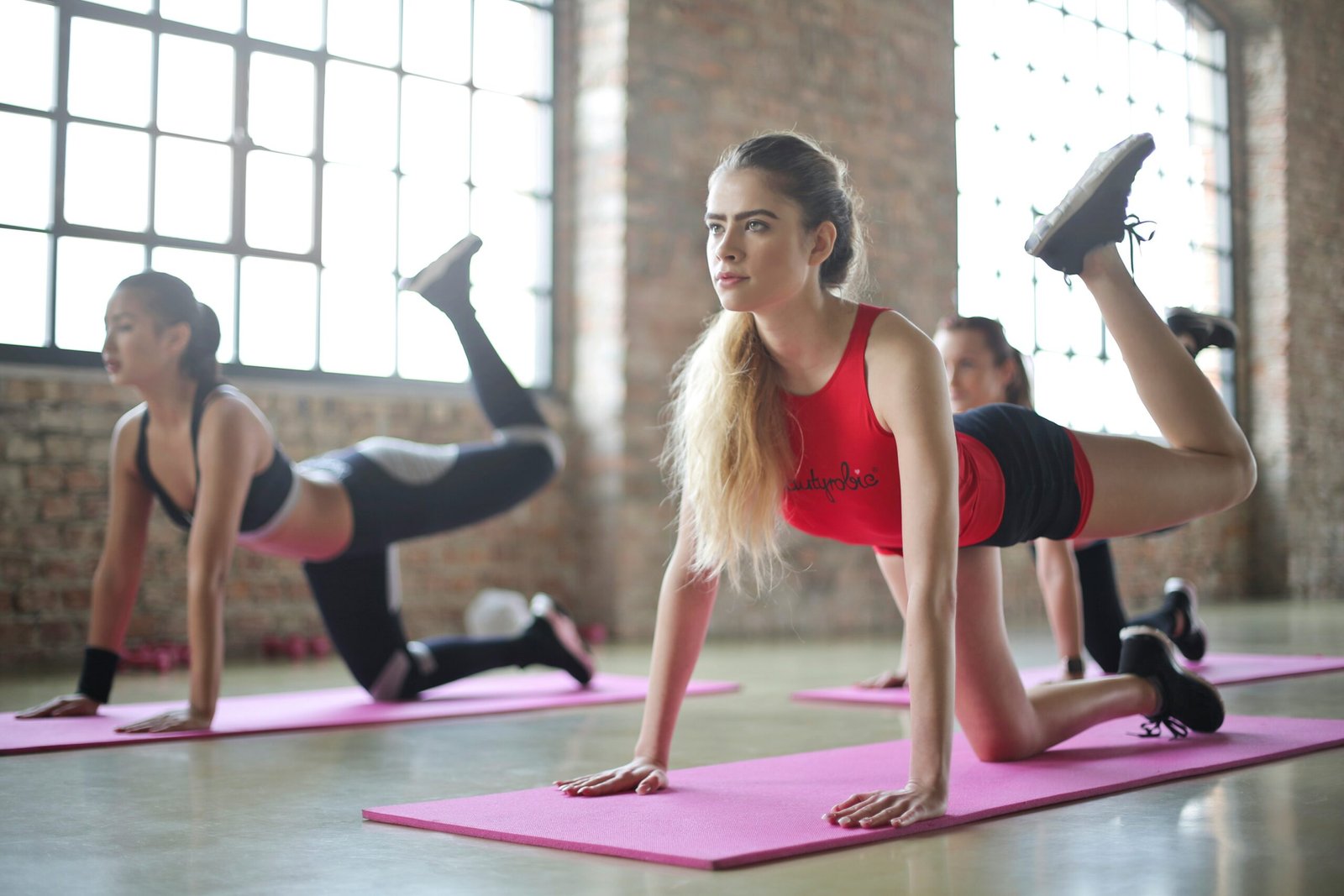
Aerobic cycling, also known as cardio cycling or spin cycling, is a form of exercise that involves riding a stationary bicycle. It is a popular workout choice for many people due to its numerous health benefits and versatility. Aerobic cycling is a low-impact exercise that can be adjusted to suit different fitness levels, making it suitable for beginners and experienced athletes alike.
Health Benefits of Aerobic Cycling
Aerobic cycling offers a wide range of health benefits, making it an excellent choice for those looking to improve their overall fitness. One of the primary benefits of aerobic cycling is its ability to improve cardiovascular health. By engaging in this exercise, you can strengthen your heart and lungs, improving their efficiency and endurance. This can lead to a reduced risk of heart disease, stroke, and high blood pressure.
In addition to cardiovascular benefits, aerobic cycling also helps to improve muscular strength and endurance. The repetitive motion of pedaling engages the muscles in your legs, including the quadriceps, hamstrings, and calves. Over time, this can lead to increased muscle tone and definition.
Furthermore, aerobic cycling is an effective way to burn calories and lose weight. During a vigorous cycling session, you can burn anywhere from 400 to 600 calories per hour, depending on your weight and intensity level. This makes it a great option for those looking to shed excess pounds or maintain a healthy weight.
Versatility of Aerobic Cycling
One of the reasons why aerobic cycling is so popular is its versatility. It can be easily customized to suit individual fitness goals and preferences. Whether you prefer a high-intensity interval training (HIIT) workout or a steady-state endurance ride, aerobic cycling can accommodate your needs.
Additionally, aerobic cycling can be done in a group setting or individually. Many fitness studios and gyms offer group cycling classes, which provide a motivating and energetic environment. These classes often incorporate music and choreography to keep participants engaged and motivated throughout the workout.
On the other hand, if you prefer to exercise on your own, you can easily set up a stationary bicycle at home and follow along with online cycling classes or create your own workout routine. This flexibility allows you to fit aerobic cycling into your schedule and exercise at your own pace.
In conclusion, aerobic cycling is a versatile and effective form of exercise that offers numerous health benefits. Whether you are a beginner or an experienced athlete, incorporating aerobic cycling into your fitness routine can help improve cardiovascular health, build muscular strength, and aid in weight loss. With its flexibility and accessibility, aerobic cycling is a workout option that can be enjoyed by individuals of all fitness levels.
When determining the duration of an aerobic cycling session, it is important to consider your fitness level. If you are just starting out or have a lower fitness level, it may be more appropriate to begin with shorter sessions to avoid overexertion and injury. In this case, a session lasting around 20-30 minutes can be a good starting point.
However, as your fitness level improves, you may want to gradually increase the duration of your aerobic cycling sessions. This will help challenge your body and continue to see progress. Sessions lasting 45 minutes to an hour can be a suitable goal for intermediate to advanced individuals.
Another factor to consider is your goals. If you are looking to improve cardiovascular endurance, longer sessions may be more beneficial. This is because aerobic exercise helps strengthen the heart and lungs, and longer durations provide more time for these adaptations to occur. On the other hand, if your goal is weight loss, shorter but more intense sessions can be effective in burning calories and boosting metabolism.
Of course, the available time you have for a workout also plays a role in determining the duration of your aerobic cycling session. If you have a busy schedule, you may need to fit in shorter sessions more frequently. In this case, you can consider breaking up your workout into multiple sessions throughout the day. For example, you could do two 30-minute sessions in the morning and evening.
It is worth noting that the duration of your aerobic cycling session is just one aspect of your overall workout. It is important to also consider the intensity and frequency of your sessions. Striking a balance between these factors will help you achieve your fitness goals while avoiding burnout or injury.
In conclusion, the duration of an aerobic cycling session can vary depending on your fitness level, goals, and available time. Starting with shorter sessions and gradually increasing the duration as your fitness improves is a good approach. Consider your goals and available time when determining the length of your sessions, and remember to also focus on intensity and frequency to create a well-rounded workout routine.
Recommended Duration for Beginners
If you are new to aerobic cycling, it is generally recommended to start with shorter sessions and gradually increase the duration as your fitness level improves. A beginner’s session can range from 20 to 30 minutes, allowing your body to adapt to the intensity and demands of the exercise.
Starting with shorter sessions also helps prevent overexertion and reduces the risk of injury. As you become more comfortable and build up your endurance, you can gradually increase the duration of your sessions.
It is important to listen to your body and not push yourself too hard in the beginning. Overdoing it can lead to fatigue, muscle soreness, and even burnout. By starting with shorter sessions, you give your body time to adjust and recover, ensuring a more sustainable and enjoyable exercise routine.
In addition to gradually increasing the duration of your sessions, it is also beneficial to vary the intensity and incorporate rest days into your schedule. This helps prevent plateaus in your progress and allows for proper recovery and muscle growth.
As you progress from a beginner to an intermediate level, you may find that you are able to sustain longer sessions without feeling fatigued. This is a sign that your cardiovascular fitness and endurance have improved. However, it is still important to listen to your body and avoid pushing yourself beyond your limits.
Remember, aerobic cycling is a form of exercise that should be enjoyable and sustainable in the long term. It is not a competition or a race to see how quickly you can reach a certain duration. Take your time, be patient with yourself, and focus on gradual progress. This will ensure that you build a strong foundation and set yourself up for long-term success in your aerobic cycling journey.
Duration for Intermediate and Advanced Cyclists
For intermediate and advanced cyclists, a typical aerobic cycling session can range from 45 minutes to 1 hour or more. These longer sessions allow for a more intense workout and provide ample time to challenge your cardiovascular system and build endurance.
During these extended sessions, cyclists can focus on various training techniques to enhance their performance. One popular approach is interval training, where cyclists alternate between periods of high-intensity effort and recovery. This method not only helps to improve cardiovascular fitness but also enhances the body’s ability to utilize oxygen efficiently.
In addition to interval training, advanced cyclists may also incorporate hill workouts into their longer sessions. Climbing hills requires greater strength and power, which can help to develop leg muscles and improve overall cycling performance. These hill workouts can be done both indoors on a stationary bike or outdoors on actual terrain.
Another important aspect to consider during longer sessions is hydration and nutrition. As the duration of the workout increases, so does the need for proper fueling. Cyclists should ensure they are adequately hydrated before and during the workout, especially in hot and humid conditions. It is also essential to consume a balance of carbohydrates, proteins, and fats to sustain energy levels and aid in muscle recovery.
However, it is important to note that while longer sessions can be beneficial for improving fitness and endurance, it is essential to listen to your body and not overdo it. Pushing yourself too hard without proper rest and recovery can lead to overtraining and increased risk of injury. It is always a good idea to consult with a fitness professional or instructor to ensure you are pushing yourself within safe limits and following a well-rounded training plan.
Factors to Consider
When determining the duration of your aerobic cycling session, there are a few factors to consider:
Fitness Level
Your current fitness level plays a significant role in determining the duration of your aerobic cycling session. Beginners may need to start with shorter sessions and gradually increase the duration as their fitness improves. Intermediate and advanced cyclists can handle longer sessions due to their higher fitness levels.
Goals
Your goals for aerobic cycling will also influence the duration of your sessions. If you are aiming to improve cardiovascular fitness, longer sessions may be more beneficial. If weight loss is your primary goal, shorter, more intense sessions may be preferred.
Time Availability
Consider how much time you can realistically dedicate to aerobic cycling. If you have a busy schedule, shorter sessions may be more manageable. On the other hand, if you have more time available, longer sessions can provide a more comprehensive workout.
Intensity
The intensity of your aerobic cycling session can also impact the duration. Higher intensity workouts may require shorter durations to avoid overexertion, while lower intensity workouts can be sustained for longer periods.
It is important to note that the duration of your aerobic cycling session should be tailored to your individual needs and capabilities. Consulting with a fitness professional or a certified cycling instructor can help you determine the optimal duration based on your specific circumstances.
Additionally, it is essential to listen to your body and make adjustments as necessary. If you feel fatigued or experience any discomfort during your cycling session, it may be a sign that you need to shorten the duration or modify the intensity. Pushing yourself too hard without allowing for adequate rest and recovery can lead to overtraining and potential injuries.
Remember, consistency is key when it comes to aerobic cycling. It is better to have regular, shorter sessions than sporadic, longer ones. Aim to incorporate aerobic cycling into your weekly routine, gradually increasing the duration and intensity over time as your fitness improves.
Lastly, don’t forget to warm up before each session and cool down afterward. This will help prepare your body for the workout and facilitate recovery. Stretching and foam rolling can also be beneficial in preventing muscle tightness and promoting flexibility.
Benefits of Aerobic Cycling
Aerobic cycling offers a wide range of benefits for both physical and mental health. Some of the key benefits include:
Improved Cardiovascular Health
Aerobic cycling is an excellent cardiovascular exercise that strengthens the heart and improves overall heart health. Regular cycling can lower blood pressure, reduce the risk of heart disease, and improve circulation. The repetitive motion of pedaling engages large muscle groups in the legs, increasing blood flow and oxygen delivery throughout the body. This not only strengthens the heart but also improves the efficiency of the cardiovascular system.
Weight Loss and Management
Aerobic cycling is an effective calorie-burning exercise that can aid in weight loss and weight management. It helps to increase metabolism, burn fat, and build lean muscle mass. Combining aerobic cycling with a healthy diet can lead to significant weight loss over time. Additionally, cycling is a weight-bearing exercise, which means it helps to strengthen bones and prevent osteoporosis.
Increased Endurance and Stamina
Regular aerobic cycling sessions can improve endurance and stamina. As you continue to cycle, your cardiovascular system becomes more efficient at delivering oxygen to your muscles, allowing you to exercise for longer periods without feeling fatigued. This increased endurance can benefit not only your cycling performance but also your overall physical fitness. Whether you’re participating in a long-distance bike ride or simply trying to keep up with daily activities, improved endurance and stamina can make a noticeable difference in your daily life.
Low-Impact Exercise
Aerobic cycling is a low-impact exercise that puts minimal stress on the joints, making it suitable for people of all ages and fitness levels. Unlike activities such as running or jumping, cycling provides a smooth and controlled motion that reduces the risk of injury. This makes it an ideal exercise option for individuals with joint issues or those recovering from injuries. Additionally, the adjustable resistance on stationary bikes allows you to customize the intensity of your workout, making it suitable for beginners and experienced athletes alike.
Reduced Stress and Improved Mental Well-being
Engaging in aerobic cycling can help reduce stress levels and improve overall mental well-being. The release of endorphins during exercise promotes feelings of happiness and relaxation, while the rhythmic nature of cycling can be meditative and calming. The combination of physical exertion and the enjoyment of being outdoors (if cycling outdoors) or the immersive experience of indoor cycling can provide a much-needed escape from daily stressors. Regular aerobic cycling can also improve sleep quality, boost self-confidence, and enhance cognitive function.
In conclusion, aerobic cycling offers numerous benefits for both physical and mental health. From improving cardiovascular health and aiding in weight loss to increasing endurance and reducing stress, it is a versatile and enjoyable form of exercise that can be easily incorporated into a healthy lifestyle.




